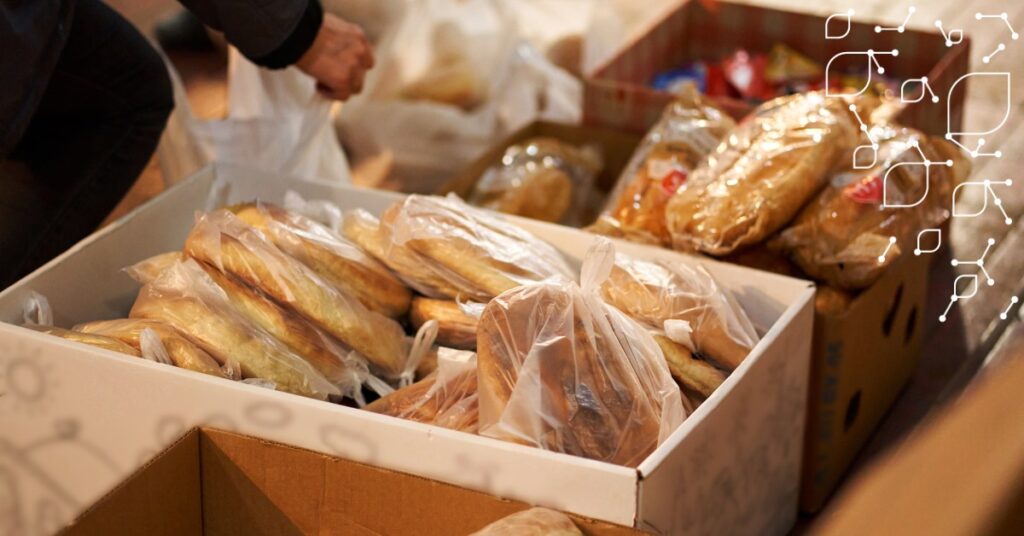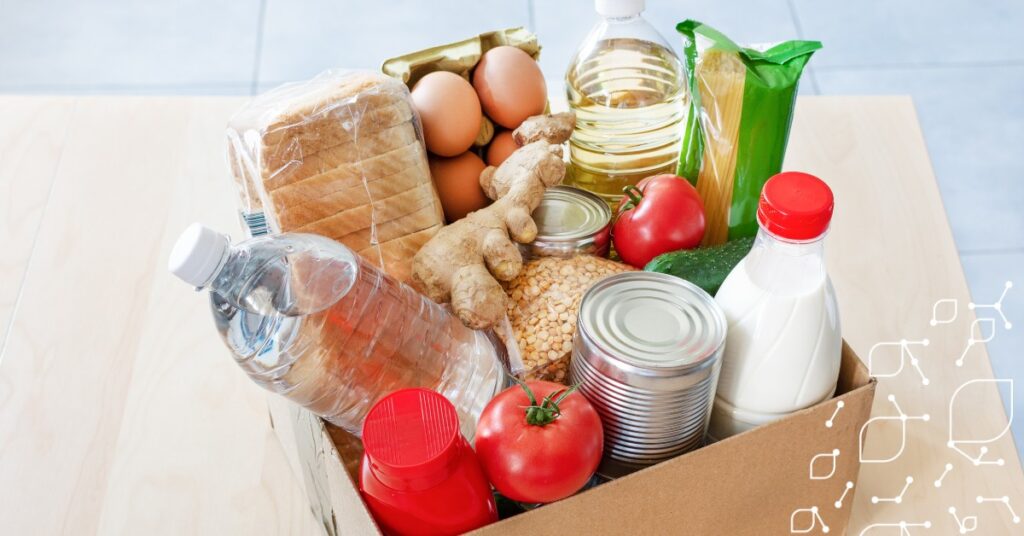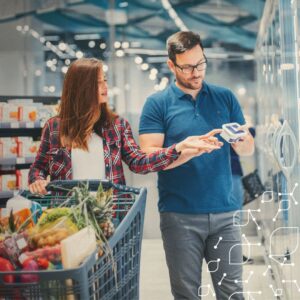
Reducing food waste is an environmental goal and a crucial aspect of responsible food management for grocery retailers. The Food Recovery Hierarchy, developed by the U.S. Environmental Protection Agency (EPA), provides a roadmap for prioritizing actions to prevent and minimize food waste. In this blog, we’ll delve into the Food Recovery Hierarchy, focusing on how retailers can prevent food waste at the top of the funnel. of the funnel.
Understanding the Food Recovery Hierarchy
To effectively apply the Food Recovery Hierarchy, grocery retailers need a nuanced understanding of each level’s implications. As retailers ascend the hierarchy, the focus shifts from prevention to responsible redirection and utilization of food resources.
Source Reduction
At the top of the Food Recovery Hierarchy is source reduction – the proactive step of preventing food waste from being generated in the first place. The goal is to strike a balance where the amount of inventory aligns closely with customer demand, minimizing the risk of unsold products that might end up as wasted food. This not only reduces waste but also improves operational efficiency and sustainability.
Feed Hungry People
The next level in the hierarchy emphasizes the social responsibility of retailers. Surplus food that is safe and nutritious for human consumption should be donated to food banks, shelters, and charitable organizations. This not only helps communities in need but also aligns with a retailer’s commitment to reducing food waste.
Feed Animals
When food is not suitable for human consumption, retailers can redirect it to animal feed. This ensures that the nutritional value of the food is utilized rather than wasted, aligning with sustainability goals.
Industrial Uses
For food that can’t be used for humans or animals, retailers can explore industrial uses. Processes such as composting, anaerobic digestion, or bioenergy generation can convert food waste into usable by-products, contributing to a circular economy.
Composting
Composting is a sustainable solution for food waste that cannot be used for human or animal consumption. By transforming inedible food waste into nutrient-rich compost, retailers not only reduce landfill contributions but also support sustainable agriculture.
Landfill/Incineration
The least preferable option for retailers is disposing of food waste in landfills or incinerating it. This approach contributes to environmental degradation and greenhouse gas emissions, underscoring the importance of adopting more sustainable practices.

Emphasizing Prevention at the Top of the Funnel
For retailers, the key to effective food waste reduction lies in focusing on prevention at the source. This involves implementing robust inventory management practices and traceability solutions. The Food Recovery Hierarchy as a strategic framework can redefine how retailers approach inventory management, making it not only a tool for profitability but a cornerstone of sustainable business practices.
Strategic Implementation of the Food Recovery Hierarchy
Source Reduction as a Guiding Principle:
Proactive Prevention:
Retailers should view source reduction not merely as a reaction to excess inventory but as a proactive strategy to prevent waste generation from the outset.
Holistic Approach:
Implementing the hierarchy strategically involves integrating its principles across the entire supply chain, from procurement to distribution, and even in collaboration with suppliers and producers.
Customizing Practices for Retail Need:
Tailored Solutions:
Recognizing that each grocery retailer has unique characteristics and challenges, a strategic application of the hierarchy involves tailoring source reduction practices to specific product lines, market trends, and consumer behaviors.
Adaptable Technologies:
Prioritizing technologies that offer adaptability and customization ensures that retailers can fine-tune their inventory management to align precisely with their business model.
Technological Priorities in 2024 for Effective Inventory Management
AI-Driven Demand Forecasting:
Advanced Prescriptive Analytics: Investing in AI-driven demand forecasting tools goes beyond traditional methods, leveraging advanced predictive analytics to analyze vast datasets and identify nuanced patterns. This technology enhances retailers’ ability to anticipate and respond to changing market demands.
Inventory Management Software:
Algorithmic Decision-Making: Inventory optimization software, powered by sophisticated algorithms, facilitates data-driven decision-making. In 2024, prioritizing solutions that offer real-time adjustments based on dynamic variables such as market trends, seasonal shifts, and unexpected events will be crucial for efficient inventory management.
Blockchain for Traceability:
Enhanced Traceability: Retailers can use blockchain to track the entire journey of products, ensuring authenticity, and aiding in source reduction by identifying potential waste points.
Real-Time Monitoring Solutions:
Responsive Inventory Management: Real-time monitoring solutions allow retailers to react swiftly to changing conditions. Technologies that provide continuous visibility into inventory levels, sales patterns, and potential issues enable retailers to make timely adjustments, preventing both overstocking and understocking.
Navigating the Future of Retail with the Food Recovery Hierarchy
The Food Recovery Hierarchy is reshaping industries, emphasizing source reduction for proactive waste minimization. In 2024, retailers prioritize AI-driven demand forecasting, inventory optimization, blockchain for traceability, real-time monitoring, and collaborative platforms. These technologies enable informed decisions, swift adaptation to market shifts, and a balance between profitability and sustainability. Embracing the Food Recovery Hierarchy prevents waste and environmental impact while enhancing profitability, fostering responsible retail practices.

![[Read next: "Level Up Your Fresh Food Inventory Management"]](https://no-cache.hubspot.com/cta/default/21714346/interactive-147974022189.png)





